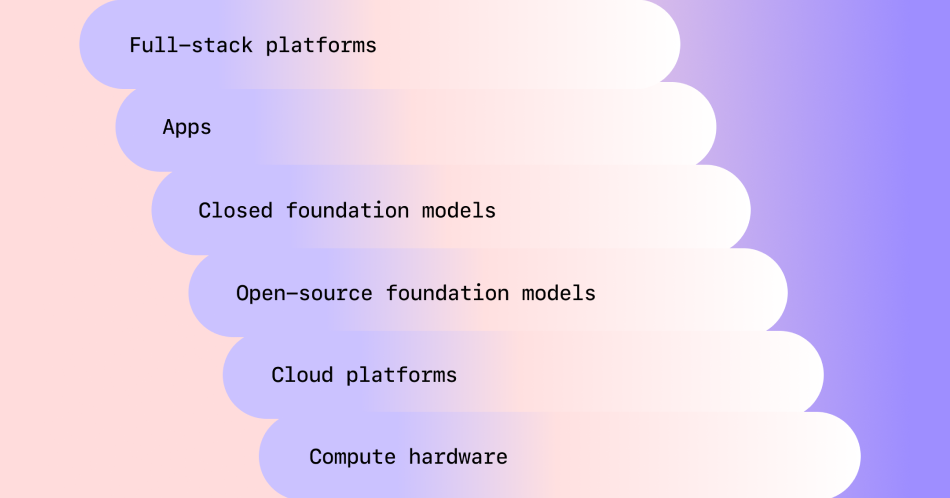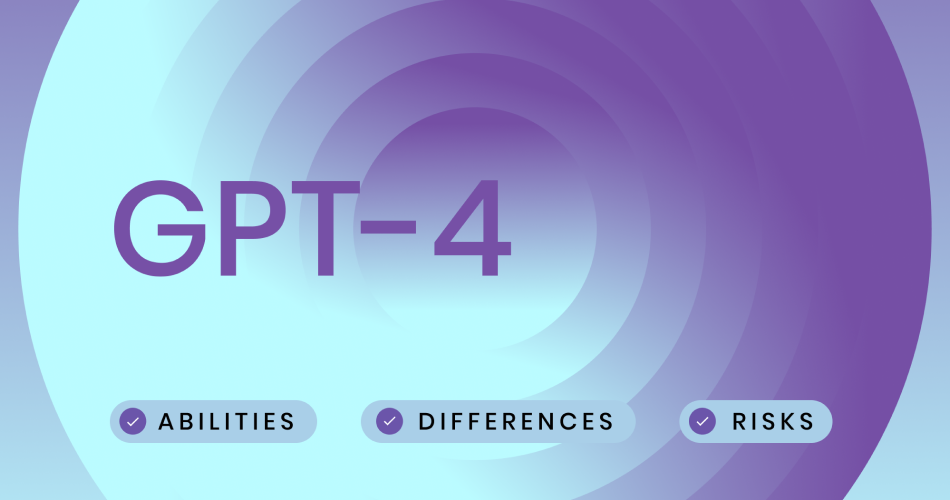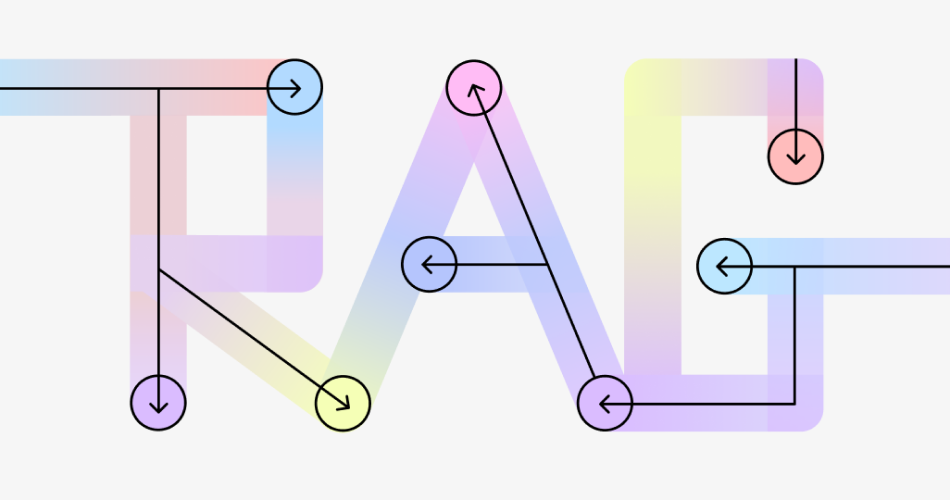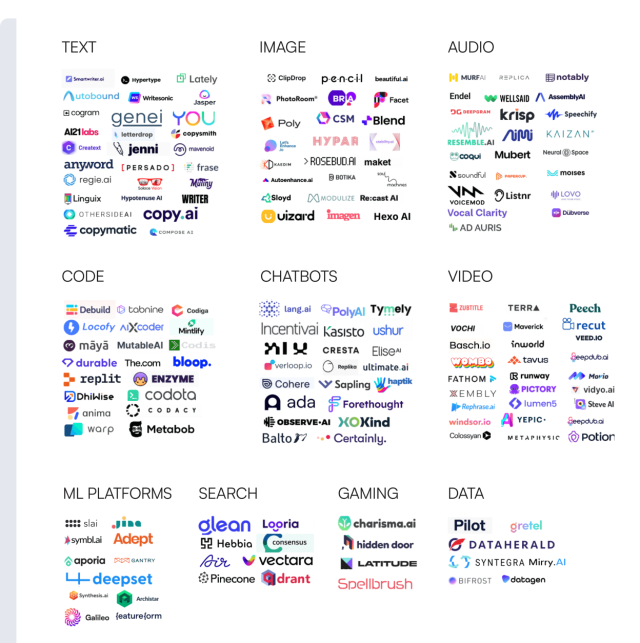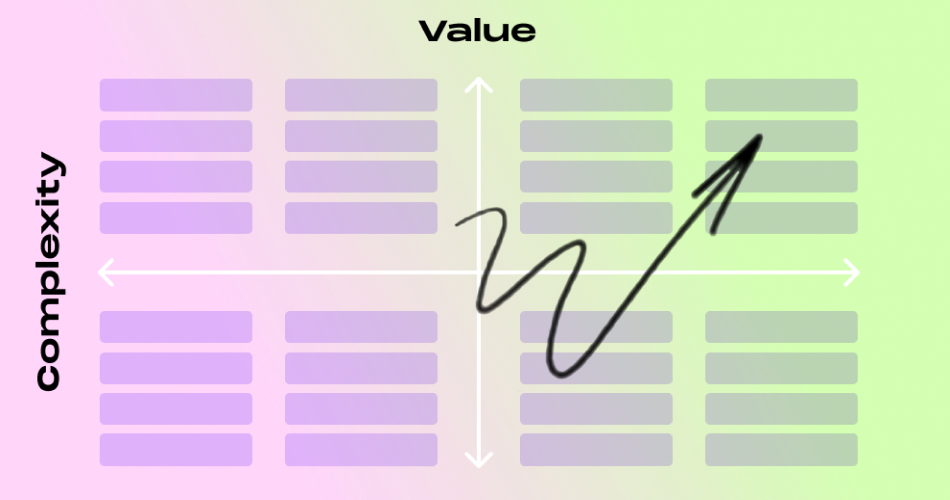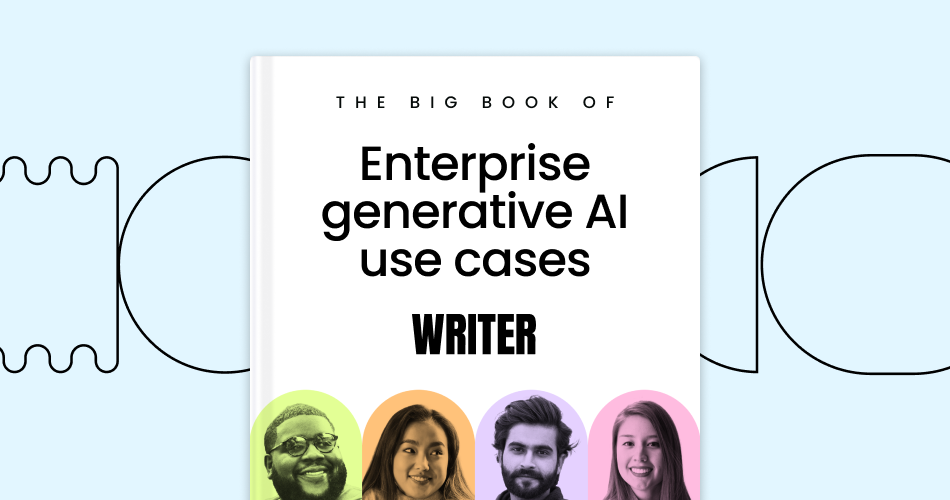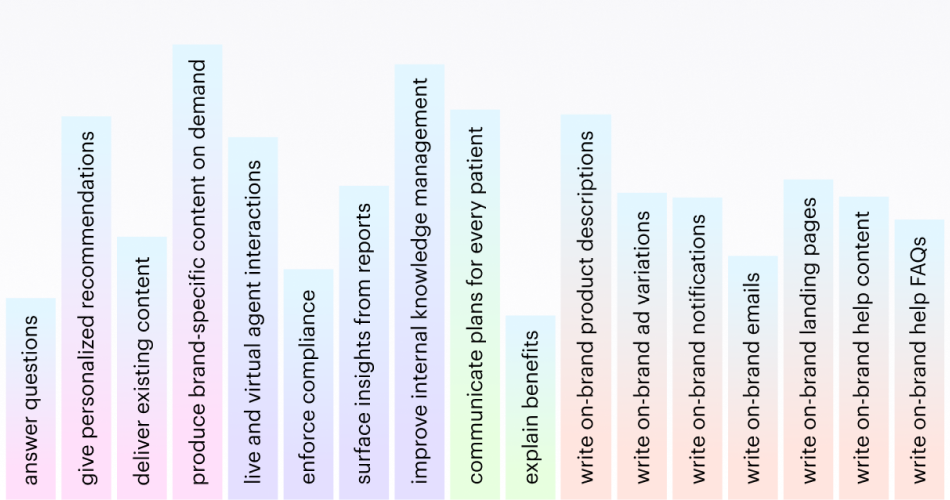Generative AI explained
The complete guide for enterprise business leaders

Introduction
Generative AI is positioned to transform everything you can imagine about work and business, and the pace of innovation is only going to increase.
Generative AI isn’t just another tech buzzword — it’s reshaping the business landscape as profoundly as the internet did. Analysts project that with generative AI alone, the global economy will get an immense boost of $7.9 trillion annually, apart from the $17.7 trillion of economic value that non-generative AI contributes yearly.
If you’re an enterprise exec, you’re probably feeling the pressure to embrace generative AI from all sides. A recent study from IBM shows that it isn’t just competitors or consumers pushing for generative AI adoption — business leaders surveyed say that employees, board members, and investors are demanding to see AI strategies in place.
In this new era, effective business leadership will require having a solid grasp of generative AI. You’re going to need to understand the risks and rewards, work AI into your digital transformation strategy, and act as a steward for responsible, ethical AI implementation and adoption. But fear not: you don’t need a PhD in data science to wrap your head around generative AI.
We’ve teamed up the creative prowess of our human writers with the capabilities of our generative AI platform, Writer, to break down complex concepts into plain, no-nonsense language. This collaboration means you’ll get quick answers to your burning questions, along with detailed breakdowns that’ll make you the ultimate AI expert in the boardroom.
With this comprehensive guide, you’ll gain the knowledge and insights needed to navigate the enterprise generative AI landscape. Stay ahead of the curve, unlock new opportunities, and position your business for success in the era of AI-driven innovation. So, let’s dive in and conquer the AI universe, one bold decision at a time.
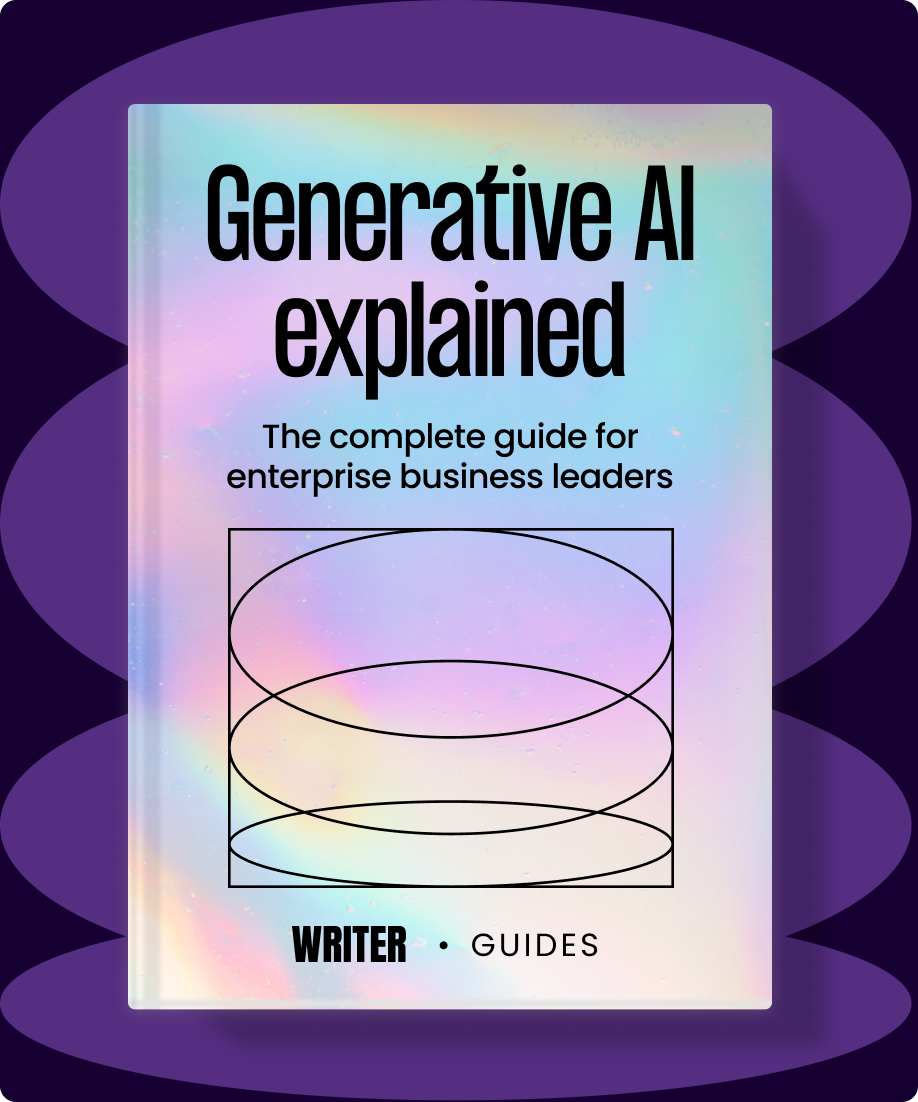
Download the ebook
Generative AI, LLMs, training data, and RAG in plain language
Let’s begin by establishing quick definitions for some of the key concepts related to generative AI in the enterprise.
Generative AI
Generative AI uses natural language processing (NLP) and machine learning (ML) to create data or content that looks like it came from a human. What makes it different from other ML technology, like search algorithms, is that it doesn’t just recognize and categorize data. It can also create something that’s new and original, often in the form of writing, artwork, or music.
It’s this ability to come up with something new that makes generative AI so powerful and exciting. It has the potential to totally transform industries across the business landscape and create incredible new experiences for people. Generative AI can use existing data to conjure up one-of-a-kind solutions in marketing, design, product development, and beyond. This technology can take mundane, repetitive tasks off your hands so you can create something truly remarkable.
Machine learning
Machine learning (ML) is a subset of artificial intelligence (AI) that enables computers to learn from data without being explicitly programmed. In an enterprise context, machine learning holds immense relevance for business leaders. It empowers organizations to make smarter decisions by predicting trends, understanding customer behavior, and identifying business patterns. By leveraging ML, companies can optimize advertising campaigns, personalize customer experiences, scale up content production, enforce rules and guidelines, detect fraudulent activity, and make accurate diagnoses.
Machine learning systems learn and improve themselves by analyzing large datasets, searching for patterns and relationships. There are three main types of machine learning: supervised learning, unsupervised learning, and semi-supervised learning. However, it’s important for enterprise leaders to consider factors such as data predicting accuracy, bias in data patterns, and the black-box dilemma when implementing machine learning solutions.
Large language models (LLMs)
Large language models (LLMs) are the intelligence behind generative AI. They use machine learning algorithms to find patterns and structures in language, allowing them to create new natural language text.
LLMs are trained on immense amounts of information collected from the web and keep on improving as they experience new data through a process known as fine-tuning and prompting.
Imagine you wanted to create an application that detects customer sentiment from emails, comments, or reviews. You could take an LLM that’s already trained in natural language processing and sentiment analysis, and then tailor it to fit the specific needs of your business, such as understanding your company’s jargon and detecting customer sentiment more accurately. You could also train the model further on voice examples so it learns how to communicate in your company’s unique style.
Training data
Training data refers to the information and examples used to teach an AI model how to generate new content. This data is crucial for the model to learn patterns, understand context, and produce output that aligns with human-like quality.
For enterprise businesses, training data plays a vital role in ensuring that the generative AI model understands the specific domain, industry, or customer needs. It can include a wide range of relevant information such as text documents, images, audio files, or even structured data from business operations.
In the previous example of a customer sentiment detection application, you’d need a large dataset of labeled customer emails, comments, and reviews to train the model. This dataset should include both positive and negative examples of customer sentiment, so that the model can learn how to accurately predict sentiment from different sources. Additionally, you may want to include a variety of different customer types and language styles, so that the model can be as accurate as possible in a variety of real-world scenarios.
The quality of your training data can make or break the accuracy of your output. By giving the model a wide range of different and representative training data, businesses can make sure that the content it generates is accurate, relevant, and of high quality. This means that enterprises can use generative AI to create captivating marketing materials, provide personalized experiences for customers, and even come up with fresh ideas for product development.
As you explore generative AI solutions, it’s important to consider how an LLM vendor prepares training data. They need to make sure that the data covers all the necessary aspects, is up-to-date, and aligns with what you want to achieve. This is crucial for getting the best possible results from the generative AI model. It’s also important to consider ethical concerns, protect data privacy, and follow regulations when selecting and handling training data for enterprise purposes. We’ll cover many of these considerations later in this guide.
GPT-4
GPT-4 is a powerful machine learning model developed by OpenAI, makers of ChatGPT. It’s their fourth iteration of a type of LLM known as a Generative Pre-trained Transformer (GPT). Due to its general-use training and lack of understanding of industry-specific data and brand guidelines, many business orgs are struggling to implement GPT-powered solutions in a meaningful way, thus limiting its effectiveness for business use.
Palmyra LLMs
Palmyra LLMs are the enterprise-grade foundational models that power the Writer generative AI platform. The training datasets for Palmyra LLMs are curated for business use through a meticulous process. Relevant data sources are selected, sensitive information is filtered out, biases are mitigated, and quality assurance checks are conducted. The datasets are continually improved to adapt to evolving business and industry needs. Plus, Palmyra LLMs consistently achieve top scores in key areas set by Stanford’s Holistic Evaluation of Language Models (HELM), an initiative for benchmarking AI.
Retrieval-augmented generation (RAG)
Retrieval-augmented generation (RAG) is a natural language processing approach that combines information retrieval and text generation to generate human-like text. It allows AI systems to access an organization’s own data to enhance the quality and accuracy of the content they generate. The Writer Knowledge Graph is a comprehensive platform that streamlines and optimizes the RAG process, enabling businesses to maximize the benefits of RAG without the complexities and costs of building their own systems.
Separating generative AI hype from reality
Before the end of 2022, some individuals and companies were dipping their toes into the generative AI early adoption waters, but their exploration was happening quietly. Then OpenAI’s chatbot tool, ChatGPT entered the … well … chat. The sudden release of free generative AI tech to general consumers opened a “Pandora’s box” of media buzz, business missteps, and genuine threats to unprepared social institutions (like, say, democracy and education).
What’s hype
In the business world, the cacophony of ChatGPT chatter has led many professionals to believe (mistakenly) that OpenAI’s chatbot encompasses all generative AI technology.
Privacy and security concerns have even prompted enterprise leaders to ban using ChatGPT in their organizations. The White House and the EU are recommending legislation to protect the safety and privacy of generative AI users, in no small part inspired by existential and societal concerns raised by the unchecked development of large language models for general use.
But equating all generative AI to ChatGPT ignores other valuable business applications and opportunities this technology represents. And it ignores the many companies, like Writer, that take a more measured, responsible, human-centered approach to developing enterprise-ready generative AI.
What’s real
Generative AI is far from a fleeting trend. It has arrived and it’s here to stay. And its applications go far beyond ChatGPT.
ChatGPT, DALL-E, and OpenAI’s language models are only a few of the many platforms, tools, and LLMs that are part of the expanding landscape.
Generative AI isn’t just a dreamy notion, like the metaverse. It is a real, tangible technology. Unlike cryptocurrency, which is popular in tech circles, generative AI is accessible to the public; from chatbots and writing tools to art generation apps. Everyone can take advantage of it.
Generative AI is expected to have a tremendous impact on all areas, from customer service, marketing, operations, to product development and more. As its potential is immense, businesses are continuously exploring ways to use it and test the limits of its capabilities.
Nonetheless, execs should pay attention — generative AI is a big leap forward in terms of technology, but it isn’t able to offer the same level of rational thinking, decision-making, imagination, or creative range that a human can deliver. Generative AI can amplify the abilities of the most talented people in your business, but it can’t take the place of them.
It’s also important to note that while many generative AI tools claim to be able to satisfy business goals, few are capable of meeting the strategic demands of the enterprise.
“Generative AI requires a fundamentally different enterprise architecture,” a recent report from Accenture advises. “With new foundation models being released every week, companies need to use the right models to support each capability.”
Survey the landscape of business-ready
generative AI
You and your stakeholders need to be thoughtful and purposeful when investing in generative AI tools. Talk through the requirements and expectations your organization has for introducing new technology.
Look beyond the OpenAI/ChatGPT hype: get familiar with other major players in the emerging generative AI industry.
Consider what makes an enterprise-grade generative AI platform and how different solutions compare for business use.
The anatomy of full-stack generative AI
Before realizing the benefits of a full-stack generative AI solution, enterprise leaders might try out different approaches. They might start with basic language models that generate text but don’t offer the customization they need. They could also experiment with rule-based systems that use predefined templates but lack flexibility. Some leaders might adopt separate AI tools for specific tasks or outsource content generation to external agencies.
But they eventually realize that a full-stack generative AI platform is the better choice. It combines a powerful language model with knowledge retrieval, AI guardrails, an easy-to-use interface, and strong security measures. This comprehensive solution allows them to generate customized, compliant, and secure content efficiently while promoting collaboration and streamlining workflows.
Full-stack generative AI
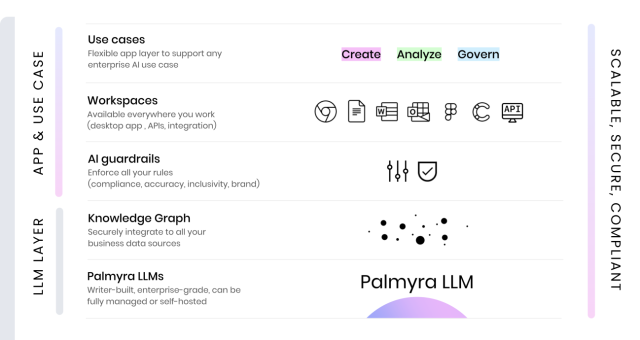
A full-stack generative AI platform for enterprise companies consists of several essential components that work together to provide a comprehensive solution. These components include:
- Large language model (LLM)
The core of the platform is a powerful language model that generates text. The LLM is trained on massive datasets using machine learning algorithms and natural language processing techniques. It should be customizable to meet business-specific needs, with training data curated to avoid biases and toxic output. An enterprise-ready LLM should be accurate, capable of processing large amounts of data, and transparent, allowing for inspection and control by the engineering team. - Knowledge retrieval
To enhance the LLM’s understanding of the company’s specific domain, a full-stack generative AI platform integrates knowledge retrieval capabilities. This component connects the AI system to relevant business data sources, such as company wikis, cloud storage platforms, and product knowledge bases. By accessing this information, the LLM can provide accurate and up-to-date output tailored to the company’s products, policies, and branding. - AI guardrails
Ensuring compliance and quality control is crucial in enterprise settings. AI guardrails are mechanisms that help govern the output generated by the LLM. These guardrails can include style guides, terminology banks, and claim detection features. They enforce guidelines for punctuation, capitalization, inclusive language, and brand consistency. By automating tasks like fact-checking and editing, AI guardrails help mitigate the risk of errors or misleading information in the generated content.
In addition to these components, a full-stack generative AI platform should also provide an intuitive user interface that integrates with existing tools and applications used by different teams within the organization. It should prioritize security, privacy, and governance, ensuring data protection and compliance with regulations. By bringing together these essential components, a full-stack generative AI platform empowers enterprise companies to leverage AI technology effectively, accelerate growth, increase productivity, and maintain control over the content they produce.
How can our business use generative AI right now?
Many organizations are open to exploring generative AI, but before they invest, they want to see real evidence of their value and effect. Take a practical approach and provide proof of how your stakeholders can use AI technology today and the benefits it’ll bring.
The key capabilities of enterprise generative AI
Enterprise generative AI offers a comprehensive set of capabilities that cater to the diverse needs of organizations. At Writer, we categorize generative AI use cases in the Create/Analyze/Govern framework.
Create
With its “create” functionality, generative AI enables teams across departments to streamline content creation, automate repetitive tasks, and generate accurate and relevant information.
This empowers employees at all levels to work more efficiently and focus on higher-value activities.
Analyze
In terms of “analyze,” generative AI provides powerful tools for data analysis, research, and insights generation.
It can quickly process and analyze large volumes of data, extract meaningful patterns and trends, and provide valuable insights to inform decision-making across various functions such as sales, marketing, finance, and operations.
Govern
The “govern” aspect of generative AI ensures compliance, accuracy, and brand consistency throughout the organization.
It can enforce legal and regulatory guidelines, detect biased language, and align content with brand standards. This capability is crucial for maintaining compliance, reducing errors, and upholding the organization’s reputation and values.
By encompassing these capabilities, enterprise generative AI addresses the broader needs of organizations, empowering employees at all levels to work more effectively, make data-driven decisions, and ensure compliance and consistency in their content creation processes. This ultimately leads to increased productivity, improved outcomes, and enhanced customer experiences.
Map AI use cases in your organization for powerful outcomes
As an enterprise business leader, you’re likely feeling the pressure to hop aboard the generative AI adoption train. But where do you start? The key is to map out use cases that align with your organization’s goals and objectives. AI use case mapping allows you to quickly identify how AI can benefit your company and provide measurable value. It’s not about adding AI for the sake of keeping up with technology, but rather identifying specific problems or opportunities that AI can solve.

Marketing

Support

Operations

L&D

HR
When mapping out AI use cases, consider two dimensions: value and complexity. Value refers to the specific outcome for your organization, such as improving productivity or enhancing the customer experience. The more people impacted and time saved, the higher the value. Complexity, on the other hand, examines the technical requirements and readiness of your organization to adopt AI. Consider existing solutions, integrations, and people-readiness. Strong initial use cases should be high-value and low-complexity.
Search for areas of your business that are eating up the most time and money. Could your customer service department use an efficiency boost? Are compliance reviews slowing down marketing campaigns? Exploring these topics is the answer to achieving the most out of generative AI, so don’t hesitate to be imaginative.
Generative AI can help teams to free up their time so that they can focus on activities that require a more strategic and creative approach. It can be used to increase the rate of production in areas such as customer and product marketing, social media, support content, UX writing, and content marketing, while simultaneously making work more enjoyable.
For example, iManage scaled their critical knowledge management resources, growing their team by 100% and scaling from 200 to 1000+ articles published per year.

The iManage Knowledge Management team uses Writer to:
- Enable a team of ~20 writers to write and publish content quickly.
- Ramp up new writers on iManage’s style guides and content guidelines in short order.
- Enable a team-publishing model that helps non-writers produce great content.
Once you’ve identified initial use cases, determine the right type of AI solution that fits your organization’s needs. This could be text-based generative AI, machine learning, speech synthesis, or image generation, among others. Involve the right people to ensure the chosen solution meets quality, accuracy, privacy, security, and compliance requirements. From there, start with a pilot project to demonstrate the potential of AI. Keep the process agile, constantly evaluating and adjusting as the technology evolves. By operationalizing AI and adopting an agile strategy, you can quickly and safely see ROI while staying ahead of the curve.
Enterprise generative AI use case examples
Generative AI offers a wide range of use cases that can revolutionize various functions within an enterprise. Let’s explore some of these use cases across different departments:
Marketing
Generative AI can help marketers increase their content production, get to market faster, and maintain brand consistency. It can automatically generate product descriptions, create blog posts, and even personalize content for specific industries and personas.
Support
Customer support teams can use generative AI to provide quick and accurate responses to customer inquiries. AI can generate on-brand support responses, create knowledge-base articles, and scale support output by automating repetitive tasks.
Operations
Operations leaders can use generative AI to increase productivity and ensure compliance. AI can automate the writing of product documentation, enforce environmental and governance compliance, and free up resources for high-impact projects.
Learning & development
L&D professionals can use generative AI to develop and deliver high-quality training content at scale. AI can generate first drafts of blog posts, align content with brand and compliance guidelines, and reduce technical writing QA time.
Product
Generative AI can assist product leaders in creating clear and consistent content to support their products. It can generate release notes, prioritize features based on customer feedback, and enforce inclusive language and terminology in product design.
Human Resources
HR teams can use generative AI to create accurate and linguistically appropriate content, analyze data for biases, and ensure non-discriminatory communication. AI can generate inclusive job descriptions, summarize job interview recordings, and flag non-inclusive language in employee communications.
These are just a few examples of how generative AI can be applied across different functions within an enterprise. By employing the power of AI, organizations can accelerate growth, increase productivity, and ensure governance in their day-to-day operations.
What influence will generative AI have on our customers?
Generative AI will become an intrinsic part of our lives. It has the potential to significantly alter the way people behave, how they come to conclusions, and how they engage with their surroundings. It’s essential for you to consider how this kind of technology will impact your customers, not just from a promotional viewpoint.
- Generative AI will enable consumers to have more natural and personalized conversations with their products and brands.
- Business execs will need to evaluate and govern AI technology responsibly to ensure customer privacy and regulatory compliance.
- Identify the industries your top B2B customers are in and consider how generative AI might change their services.
- Analyze those industries to determine how generative AI could transform customer experiences in terms of personalization, analysis, and automation.
For general consumers: conversational interactions everywhere
If you’re an exec at a consumer brand or public-facing organization, consider how your customers’ lives will change now that generative AI is increasingly a part of daily life. The potential of generative AI to generate content quickly has been widely discussed, but it’s the ability to converse with AI chatbots in a more complex manner than we do with Siri or Alexa that truly captures the imagination of the general public, leading to both enthusiasm and trepidation about the possibility of receiving unique, tailored replies.
Adding generative AI capabilities to existing “smart” products means natural conversations and original content creation will happen between consumers and their toys, video games, appliances, and cars.
It also means consumers will expect their virtual encounters with brands to be more conversational and personalized than ever before.
Imagine that, instead of using buttons and links on a website to find information and interact with content, you talk (via text or voice) to a brand app or website powered by generative AI. The website can answer questions, give personalized recommendations, deliver existing content, and even produce brand-specific content on demand. It may even have a virtual, talking avatar (the return of Clippy?!? We hope not).
For business execs, it means brand guidelines and compliance will be crucial to delivering a consistent, signature experience to every consumer interaction. It also demands a responsible approach to generative AI technology evaluation and governance to make sure your AI-powered services are secure and compliant with relevant regulations, including customer privacy.
For B2B customers: industry-specific solutions everywhere
If you’re a leader of a B2B organization, identify the industries that your top customers are in. Consider the services they offer and how generative AI might change how they go about delivering those services.
BY INDUSTRY
Financial services
Healthcare & life sciences
eCommerce & retail
Technology
BY FUNCTION
Marketing
Operations & IT
Content strategy
Support
Editorial
Learning & training
Documentation
HR
If your customers are in financial services, for example, they’re likely trying to figure out how to use LLMs to replace first-gen AI models for things like claims processing or customer communication. They’re also looking into enforcing compliance, surfacing insights from reports, and improving internal knowledge management.
Customers in healthcare and life sciences are likely to use generative AI to keep their patients informed, streamline care coordination, and provide more personalized encounters.
Those working in retail and eCommerce are likely going to use generative AI to better personalize recommendations for customers, automate inventory management, create more interactive shopping experiences, and optimize customer service interactions.
Generative AI will raise the bar when it comes to customer service as more and more companies invest in the technology to power live and virtual agent interactions and help center content. To keep up with any competitors, it’s worth taking a look at how you can implement this technology as well.
You have the power to transform customer experiences in almost every industry with generative AI. Personalization, analysis, and automation are powerful tools that could enable businesses to save money, grow their operations, and gain a deeper understanding of their customers.
What are the business risks of using generative AI — and how do we avoid them?
Risk mitigation is necessary for adopting new technology, and that’s equally true about generative AI. You’ll need to understand what the biggest concerns are for enterprise AI adoption and the countermeasures in place to avoid them.
The “plausible BS”, aka “AI hallucinations” risk
Many generative AI tools can spit out errors that sound plausible, known as ‘hallucinations.’ They also have difficulty identifying sources of truth.
While OpenAI’s ChatGPT gained millions of users within a week of launch, it also attracted some bad attention over its false outputs. OpenAI claims their latest large language model (LLM), GPT4, reduces hallucinations, but it still isn’t 100% reliable.
Companies like Google and Microsoft have been quick to counter, unveiling their own AI chatbot rivals. Unfortunately, Google’s Bard further demonstrated the hidden dangers of unchecked generative AI — the chatbot made a factual error in its first demo.
With these sorts of brand (and regulatory) risks possible, why would companies be comfortable investing in this technology? It’s a big issue, which is why it’s important to have steps in place to avoid these types of mishaps. To avoid publishing inaccurate content, you’ll need a human at the helm to validate any claims or sources.
Writer combats the “plausible BS” with a claim detection tool that flags statistics and quotes for human verification. Also, by training Writer on a company’s content as a dataset and using live URLs in prompts, you’re more likely to get accurate, hallucination-free output.
Other risks for business use of generative AI
Additional concerns about using generative AI in business are around data security/privacy, copyright law, and compliance.
Data security/privacy risks
Tools built on OpenAI LLMs reserve the right to reserve the right to retain, access, and use your data. This makes it extremely risky to use such tools for any confidential or customer data. And because OpenAI and its partners can use your data to train their model, their other customers can profit off your proprietary training data.
That means if someone at your company uses proprietary or regulated information like code or patient health records in a prompt, it’s part of OpenAI’s database. Your IP is exposed, and you may have violated privacy laws.
Copyright concerns
Large language models like GPT4 are trained on vast amounts of public data, some of which may be proprietary or copyrighted. Original creators question if companies have the right to profit from their material as inputs for training or prompting. In the US, it’s not illegal to scrape the web to build LLMs — but many legal experts are starting to claim that the legal framework isn’t built to consider the use of copyrighted material in AI prompts.
Compliance issues
Finally, with the release of GPT-powered APIs, everyone will have a virtual writer in their pocket — but a virtual writer they can’t control. Companies can’t fine-tune general-use AI tools on their brand, style, and terminology guidelines, which can lead to inconsistent and inaccurate output that undermines brand and industry compliance.
For example, environmental, sustainability, and governance (ESG) standards require that product descriptions and marketing avoid the use of certain terms like “eco-friendly.” If a marketer uses ChatGPT to generate and publish a quick blurb about your product with the term included, you may not be able to sell that product in certain countries.
Countermeasures
Enterprise-grade AI will give you brand-specific output and security features that your IT teams will insist on — like your data not being used to train a foundation model. To make the most of this technology, marketers must fine-tune their models for their specific use cases and train the models with their own expertly crafted, human-generated content.
With the right generative AI platform, you’ll not only avoid factual errors; you’ll also ensure brand unity with a custom-tailored, enterprise-ready AI tool.
Secure access
Manage access centrally with SSO and control permissions by role. Audit and report on activity with granular logs. Enable multi-factor authentication for even greater protection.
Secure configuration
Choose a configuration that fits your requirements. Deploy behind your firewall? With a VPN? For some apps only? Restrict IPs? We’ve got you.
Reliability
Writer offers real-time and historical platform status, and a 99.9% uptime commitment to Enterprise customers.
How do we train our team to use generative AI?
Rolling out new technology takes employees’ time away from other projects for training. If implementing AI is too cumbersome an endeavor, then it defeats the purpose of increasing a company’s productivity. For executives and boards to agree to invest in generative AI, you’ll need a clear plan on how your organization will make training and adoption as seamless as possible.
Use generative AI tools where your team already works
The most straightforward way to get team members started on using generative AI? Let them try it out in the tools they already use. Look for enterprise-grade AI platforms with APIs that embed generative AI functionality into your own applications. They should also offer integrations that plug into software apps like Figma, Microsoft Office, Contenful, Google Chrome, and Google Suite products.
One quick word of caution:
As discussed in the previous section on risks, using AI features powered by general-use LLMs in software apps like Slack and Google Docs is a risky move for enterprise businesses. Your employees may be tempted to start testing out the exciting new AI features released in their favorite apps, potentially exposing sensitive data. If your IT security team hasn’t already developed a policy on the use of AI features in software apps, they should do so ASAP.
Put AI tools in the hands of your most strategic/ creative thinkers
As mentioned earlier, generative AI should amplify and scale your best people’s work. While AI tools can offset cognitive loads, your users should be smarter than the tools they wield and never let the technology do the thinking for them.
Users need to recognize on an expert level what quality outputs should look like and when to fact-check. Users can also help with use case discovery by finding creative new ways to employ generative AI in your org.
Commvault, a technology company focused on data protection, recognized the potential of generative AI and sought to empower their employees to explore new use cases for Writer.
It all began when their product marketing team discovered Writer and recognized its value in content creation and enablement. Excited about its capabilities, they championed the platform and expanded its usage across the entire marketing organization.
This led to the realization that if Writer could benefit marketing, it could also be valuable for sales, engineering, and other teams. Commvault’s Chief Market Officer, Anna Griffin, saw the opportunity to unify the organization’s strategy by having everyone on a single platform, and thus, Writer became an integral part of their operations.
Train “AI whisperers” on your teams
Knowing how to write an effective AI prompt is crucial when working with generative AI. And no, we’re not talking about the generic ChatGPT prompt lists floating around on LinkedIn. Anyone in your org using AI tools should know what makes an effective natural language prompt that results in useful outputs– and when it’s best not to use a chatbot and use a different interface instead.
How can we get the most out of a generative AI investment?
To maximize the return on investment (ROI) of your generative AI implementation, it’s essential to follow a strategic approach. Here are some key steps to help you get the most out of your generative AI solution:
- Identify and prioritize use cases:
Start by identifying the areas within your organization where generative AI can have the most significant impact. Look for repetitive tasks, content creation processes, or areas where insights and analysis can drive better decision-making. Prioritize these use cases based on their potential to save time, improve efficiency, or unlock new opportunities. - Develop a comprehensive implementation plan:
Once you’ve identified the use cases, create a detailed project plan that outlines the specific goals, timelines, and resources required for each use case. Consider factors like training, data preparation, and integration with existing systems. By planning ahead, you can optimize your resources and ensure a smooth implementation process. - Foster adoption and continuous improvement:
Successful generative AI implementation relies on user adoption and continuous improvement. Provide comprehensive training and support to your employees, enabling them to effectively use generative AI tools and integrate them into their workflows. Encourage collaboration and knowledge sharing among teams to discover new use cases and share best practices. Regularly evaluate the impact of generative AI on your organization’s performance and make adjustments as needed to drive ongoing improvement.
By following these steps, you can ensure that your generative AI investment delivers tangible benefits, such as increased productivity, improved content quality, and better decision-making capabilities. It’s important to approach generative AI implementation strategically and continuously refine your approach to maximize its value to your organization.


